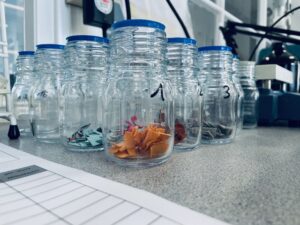
Amines from azo dyestuffs
MAK amines, azo dyes according to LFGB
DIN EN ISO 14362-1 and DIN EN ISO 14362-3 define procedures to test for azo dyes that can release prohibited primary aromatic amines. In both procedures, the dyes are extracted and reduced and the concentration of the amines is determined.







































